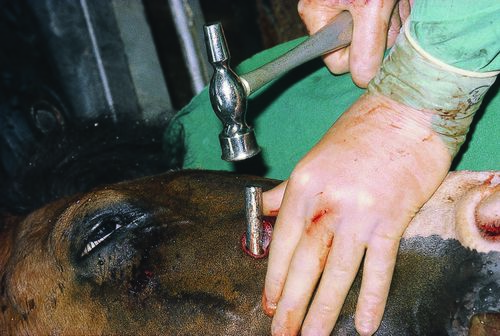Difference between revisions of "Veterinary Dentistry Q&A 22"
| Line 19: | Line 19: | ||
The objectives of the aftercare, which can be prolonged, are to eliminate secondary infection from the adjacent tissues and to prevent contamination of the alveolus during the healing stages. | The objectives of the aftercare, which can be prolonged, are to eliminate secondary infection from the adjacent tissues and to prevent contamination of the alveolus during the healing stages. | ||
| − | |l1= | + | |l1=Cheek Tooth Extraction - Horse |
|q2=What are the indications for the extraction of cheek teeth in horses? | |q2=What are the indications for the extraction of cheek teeth in horses? | ||
|a2= | |a2= | ||
| Line 29: | Line 29: | ||
Unless the evidence is convincing it is irresponsible to proceed with the extraction surgery. | Unless the evidence is convincing it is irresponsible to proceed with the extraction surgery. | ||
| − | |l2= | + | |l2=Cheek Tooth Extraction - Horse |
</FlashCard> | </FlashCard> | ||
Latest revision as of 20:51, 15 October 2011
| This question was provided by Manson Publishing as part of the OVAL Project. See more Veterinary Dentistry Q&A. |
This photograph illustrates the traditional method used to extract the cheek teeth of horses by repulsion.
| Question | Answer | Article | |
| What are the surgical principles of this procedure? | The technique necessitates an apical approach to the diseased tooth which is then driven out into the mouth with a hammer and punch. In order for extraction procedures to be successful it is essential to accurately identify which tooth, if any, is diseased and then to remove the right tooth, the whole tooth and to damage nothing but the tooth. The objectives of the aftercare, which can be prolonged, are to eliminate secondary infection from the adjacent tissues and to prevent contamination of the alveolus during the healing stages. |
Link to Article | |
| What are the indications for the extraction of cheek teeth in horses? | Indications include idiopathic apical abscessation, pathologic and iatrogenic fracture, impaction, maleruption with secondary periodontitis, and malformations including developmental tumors. For the maxillary arcade the indications are similar but with the addition of periapical abscessation secondary to infundibular necrosis. Evidence that a tooth requires extraction is obtained from the external signs, detailed oral examination, and radiography. Unless the evidence is convincing it is irresponsible to proceed with the extraction surgery. |
Link to Article | |
